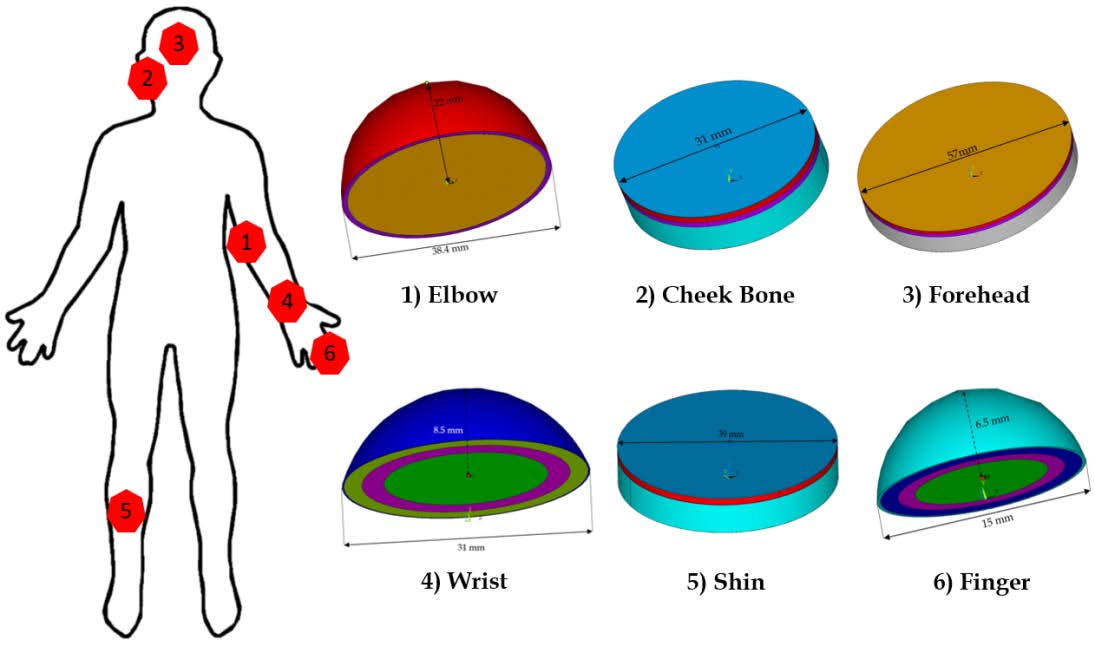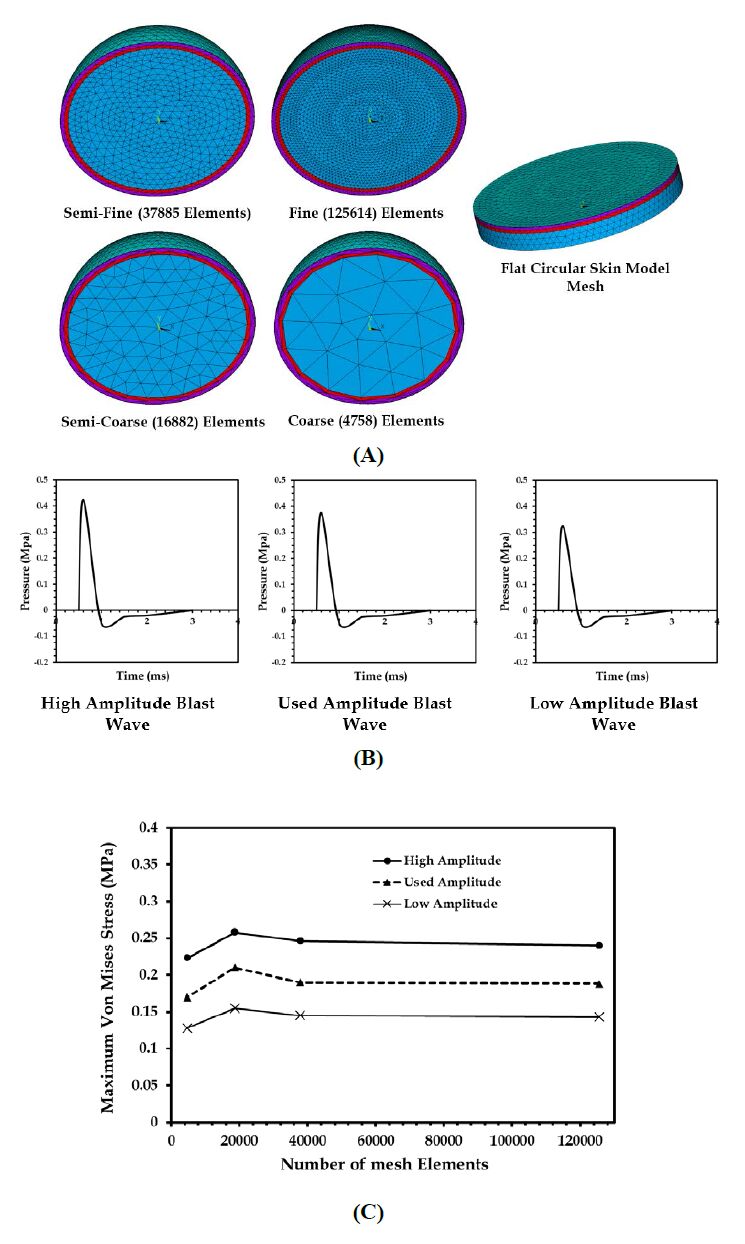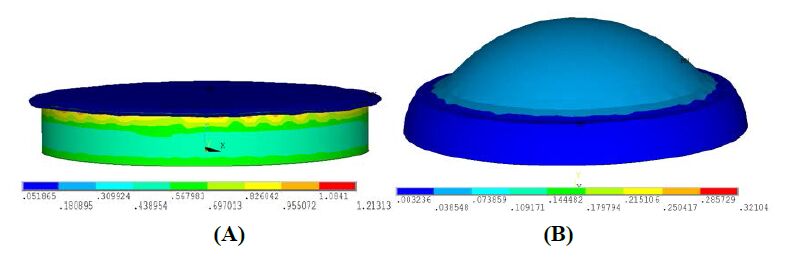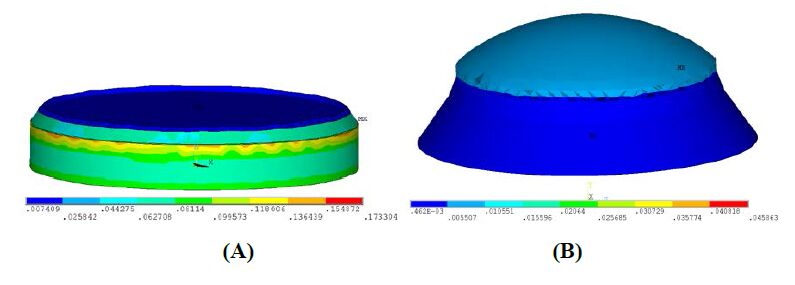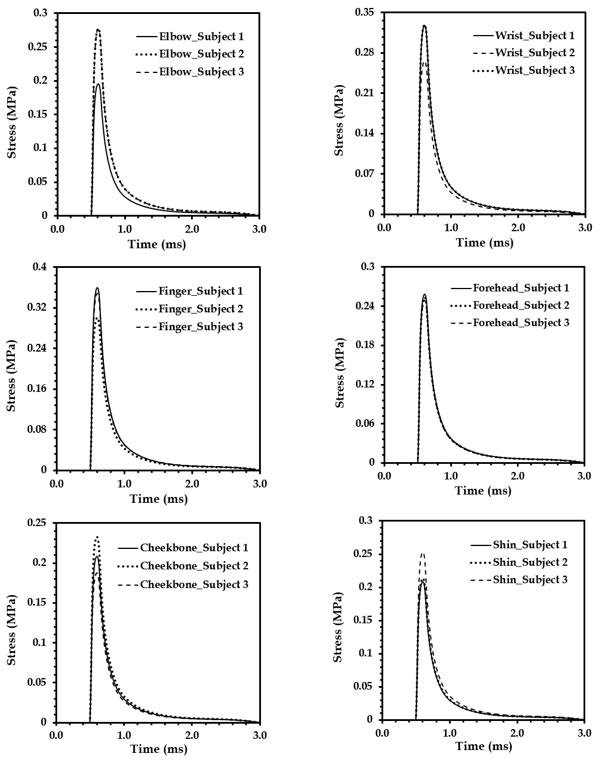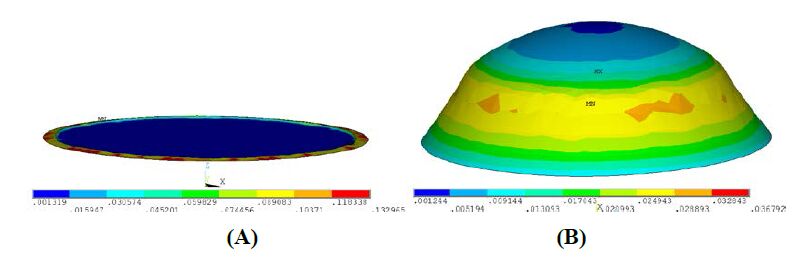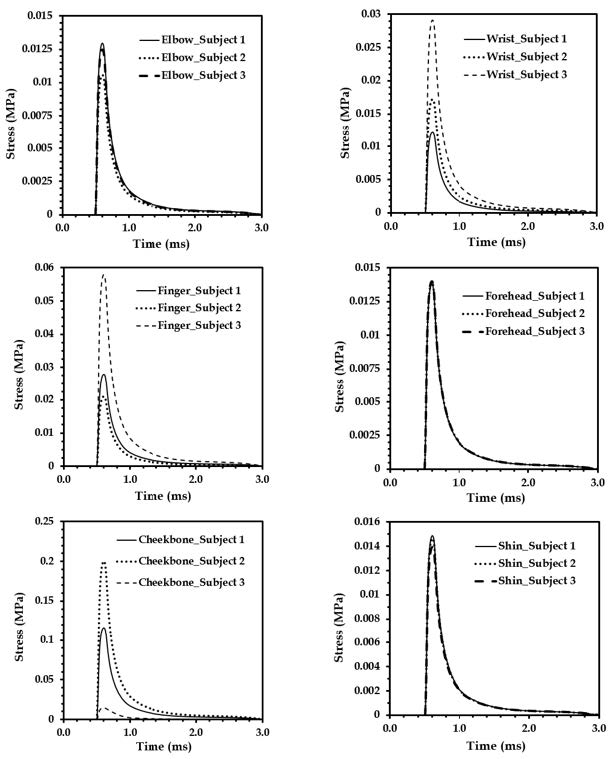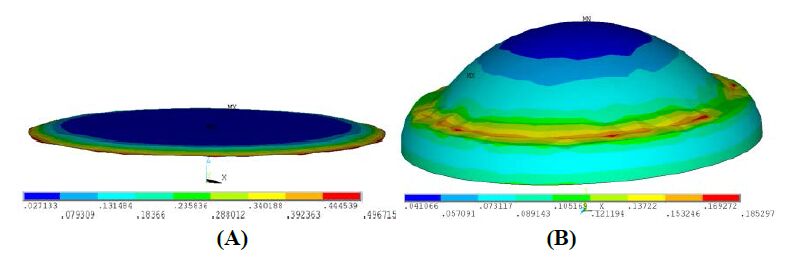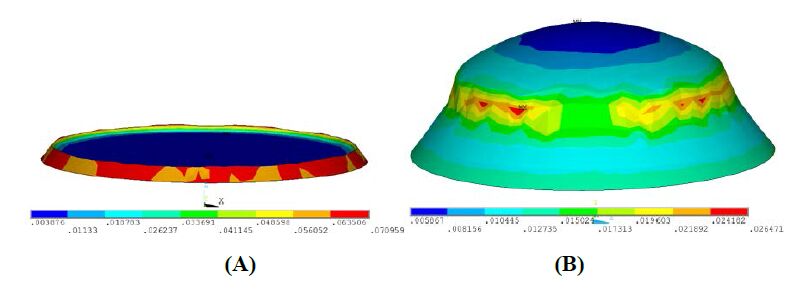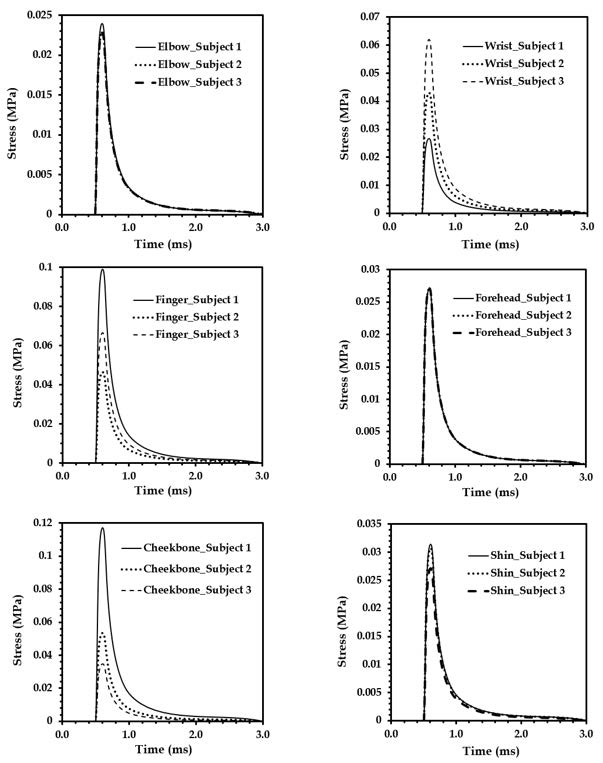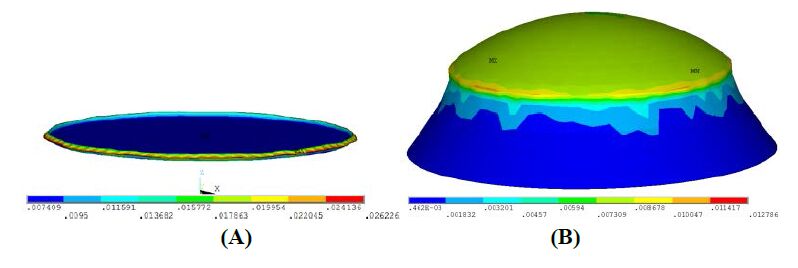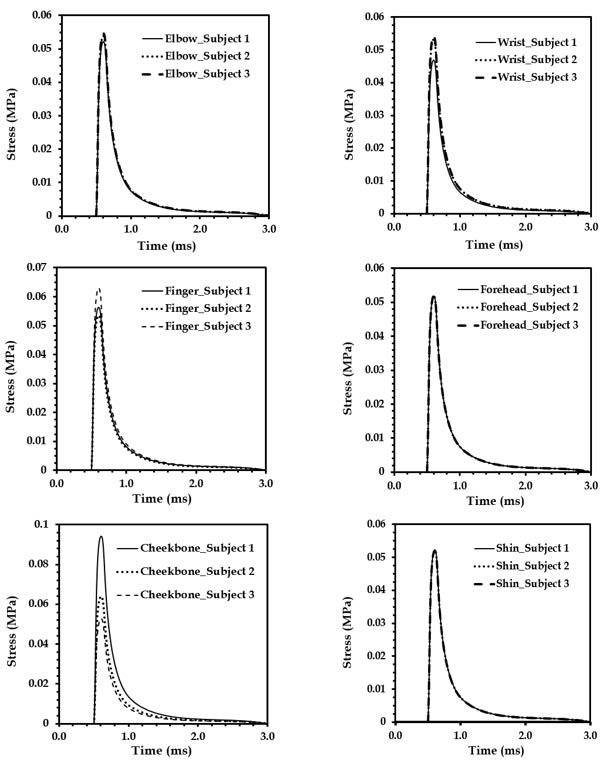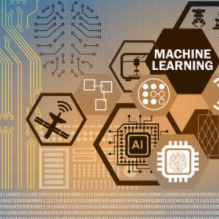1. Introduction
Blast injuries are common in a battlefield, and often, severe injuries with post-traumatic effects (such as the Traumatic Brain Injury (TBI)) are observed in such blast situations, than death. To date, the personal protection equipment (PPE’s) designed by the U.S. military are not sufficient for blast resistance [1]. Also the biomechanics of blast injury and trauma is poorly understood by doctors and medical practitioners [2].
A blast wave is physically a sudden expanding volume of compressed gas, which may cause injury to the human body in numerous ways and in varying degrees of harm [3,4]. Blast injuries can be categorized into four major types: primary, secondary, tertiary, and mutilating. Primary blast injury is caused by a blast wave striking the body and transmitting energy directly into the body. Secondary blast injury occurs by debris propelled onto or into the body by the blast or its blast wave. The force with which a blast occurs is called its load. Blast loading can inflict enough stress on the body to cause it to be flung onto a structure where tertiary blast injury can occur. It can even cause a mutilating blast injury, or traumatic amputation of one or more of the body parts.
A blast wave consists of two parts namely positive and negative sections. A typical blast wave pressure profile (see Figure 1) in open air is characterized by the Friedlander wave equation [3,4]. The positive portion of the plot corresponds to a sudden rise in pressure, which dissipates within a short distance and time span. Right after the positive phase dissipates, a negative pressure phase (forming a vacuum type atmosphere) develops. The highest point of the blast pressure profile is called the blast overpressure (or peak).
In literature, the effect of blasts on the human head has been studied extensively using experimental [5,6,7,8,9,10] and computational modelling [5,6,7,8,9,10,11,12,13,14,15,16] techniques. Mostly, experiments have been conducted on either live human subjects, cadavers, animal models or surrogates [1,16,17]. The major disadvantages associated with such experimental tests are: 1) Limited availability and high cost, 2) Ethical issues associated with testing on live human subjects, and 3) Drastic change in the material properties of human tissues with death in cadavers. A plethora of computational models to study the effect of blasts induced Traumatic Brain Injury (b-TBI) have been developed by Ganpule et al. [7,8,12,13,14] and others [1,2,5,9,11,15,16,17,18]. However, to date, a very few studies have focussed on blast induced injuries on the other parts of the human body. In fact, in literature, besides the head, body locations such as the elbow, wrist, face, foot etc. have been found to be highly vulnerable to injuries occurring from blasts [2,4,17,18,19,20,21,22,23,24,25]. This warrants a detailed study on the mechanics of such whole body injuries, which would be an indispensable first step towards designing of blast resistant PPE’s and body armours in the future.
Recently, the effect of blast loading on the human skeleton [26] and the effect of landmines on the lower extremity (the foot) [27] were studied numerically using Finite Element Method (FEM). High blast induced dynamic stresses were observed at the bones which may cause traumatic fractures. Based on this study, our current work aims to further investigate the mechanics of interaction of blasts with the various skin layers namely the epidermis, dermis, the hypodermis (or muscle), and also the bone section, at various locations of the human body, using novel subject-specific computational modelling techniques. Section 2 presents the various geometrical and FEM techniques adopted in our analyses. Section 3 discusses the various results followed by the conclusions in Section 4.
2. Materials and Methods
2.1. Geometrical modeling
For our study, skin and bone sections from six locations of the body namely the elbow, finger, wrist, cheek bone, forehead and shin, were chosen and modelled based on the knowledge of human anatomy [28] and eye estimation of three subjects (One Caucasian, and two Asians) [28,29] representing an average age group of 19-27 years. A 3D circular section with the various skin layers namely the epidermis, dermis, hypodermis (muscles), and bone were modelled in finite element software ANSYS. Locations such as the finger, elbow and the wrist which have a significant curvature were modelled as curved spherical surfaces, and the rest of the sections were modelled as flat cylindrical stacks of skin layers and bone, as shown in Figure 2. The thickness of the different skin layers were chosen based on the extensive human skin thickness data available in literature [30,31,32,33,34,35,36,37,38,39,40,41,42,43].The approximate dimensions of the skin and bone section geometries used in our work are presented in Figure 2, and the thickness values adopted for different skin and bone section layers are listed in Table 1. It should be mentioned that the thickness for the bone is assumed only for a small section of the bone and not the entire bone.
Table 1. Subject and body location specific thicknesses of various skin and bone section layers adopted for developing the geometrical models.
| Thickness (mm) | Elbow (Curved) | Finger (Curved) | Wrist (Curved) | Cheek bone (Flat) | Forehead (flat) | Shin (flat) |
| Subject 1 (Caucasian) |
| Epidermis | 0.09 | 0.22 | 0.14 | 0.13 | 0.11 | 0.14 |
| Dermis | 1.23 | 0.98 | 1.15 | 1.12 | 0.85 | 0.97 |
| Hypodermis (Muscles) | 0.11 | 1.22 | 1.56 | 1.17 | 0.08 | 0.08 |
| Bone section | 6.25 (Radius) | 4.78 (Radius) | 8.77 (Radius) | 5.45 | 5.12 | 5.30 |
| Subject 2 (Asian) |
| Epidermis | 0.08 | 0.19 | 0.1 | 0.09 | 0.09 | 0.09 |
| Dermis | 1.03 | 0.93 | 1.0 | 1.07 | 0.78 | 0.92 |
| Hypodermis (Muscles) | 0.08 | 1.2 | 1.53 | 1.0 | 0.07 | 0.07 |
| Bone section | 5.66 (Radius) | 3.28 (Radius) | 8.48 (Radius) | 5.0 | 5.25 | 4.80 |
| Subject 3 (Asian) |
| Epidermis | 0.13 | 0.25 | 0.15 | 0.16 | 0.11 | 0.13 |
| Dermis | 1.20 | 1.23 | 1.45 | 1.27 | 0.92 | 0.96 |
| Hypodermis (Muscles) | 0.12 | 1.16 | 1.74 | 1.10 | 0.08 | 0.07 |
| Bone section | 5.45 (Radius) | 3.65 (Radius) | 8.20 (Radius) | 5.68 | 5.94 | 4.5 |
Contact pairs were placed numerically to ensure contact between the various skin and bone section layers. The type of contact pairchosen was “bonded always”, with negligible friction. The various constraints and loading conditions adopted for our study are discussed in the upcoming finite element modelling section 2.2.
2.2. Finite element modeling
Development of a finite element (FE) model of a biomechanical system comprises of the various steps of geometrical discretization using viable meshing techniques, assignment of appropriate boundary conditions and loads, and the right interpretation of results, which are clinically relevant [44,45]. For our work, a non-linear transient FE analysis capturing the various phases (or time frames) of blast loading was adopted.
Higher order 3D 20-node Solid 186 type quadratic tetrahedral elements were chosen for meshing of all the skin and bone section layers. A detailed mesh convergence study was conducted to ensure accuracy of results from our analyses. Figure 3A shows the four meshes namely a coarse, semi-coarse, fine and very fine, which were subjected to blast loadings with three different amplitudes as shown in Figure 3B. Figure 3C presents the results of the mesh convergence study, from which, it was concluded that semi-fine mesh for the curved section with 37885 elements was a stable mesh for our further analyses. Appropriate mesh sizing controls (with a global element edge length of 0.1 mm was applied on the epidermal layer to obtain the semi-fine mesh in Figure 3A, followed by a continuum mesh generation for the dermis, hypodermis and the bone section in order) were used to ensure a smooth mesh transition from one layer to another, and also to optimize the number of elements generated [45]. For the current analyses, the bottom surface of the bone and skin layers were constrained in all degrees of freedom to simulate the strong attachment of the skin layers to the bone [46]. The constraints for a typical flat circular section and curved section models are shown in Figure 4A.
Blast loading (pressure) was applied to the flat circular and curved skin and bone section models as shown in Figure 4B with red contour lines. The blast load steps were characterized using the Friedlander equation 1, where Ps is the peak pressure and t* is the time at which the pressure crosses the horizontal X axis for the first time (before the negative phase). Assuming Ps as 0.375 MPa from 0.5 to 0.6 ms, and −0.5 MPa from 0.6 to 1 ms, a t* value of 0.826 ms was estimated numerically. Table 2 lists the four load steps applied sequentially to simulate the Friedlander blast wave in our analyses.
Table 2. Pressure loads applied at different times (load steps) to simulate blast loading [2] in our computational models.
| Load Step | Time (ms) | Load/Pressure (MPa) |
| 1 | 0-0.5 | 0 |
| 2 | 0.5-0.6 | 0.375 |
| 3 | 0.6-1 | -0.05 |
| 4 | 1-3 | 0 |
Regarding the boundary conditions employed in our work (Figure 4), it should be mentioned that a pressure-time history usually doesn’t apply directly on a structure in a blast scenario. However, under the assumption of close proximity of a subject to the blast and the consequent incidence of an uniform blast pressure from all directions, such an application of a time varying pressure on a model directly is reasonable. Additionally, a sudden change in the moment of inertia (or motions) of skin (over less than a millisecond) with respect to a relatively stationary bone structure of an individual has been assumed to reasonably constrain the bottom of the bone section in all degrees of freedom.
Soft tissues like skin show non-linear viscoelastic behavior under tension or compression. Hyperelastic curve fit equations such as Mooney-Rivlin, Neo-Hookean, Martins and Yeoh can be used to characterize soft tissue behavior precisely [47]. Equation 2 shows the Yeoh’s hyperelastic constitutive equation relating the stress (σ) and the stretch (λ=1+ε), for uniaxial and isotropic mechanical test. The parameters c10, c20, and c30 are the curve fit parameters, and I1, I2 and I3 are the invariants of the Cauchy Green tensor [47], and also functions of the Principal Stretches (λi, I = 1, 2 and 3) along the X, Y, and Z Cartesian coordinate directions, as given by equations 3-5. The parameter di used in equation 6 is mainly for FEM calculations in ANSYS. K is bulk modulus in equation 6.
|
σYeoh=2(λ2i−1λi)(c10+2c20(I1−3)+3c30(I1−3)2),i=1
|
(2) |
In the current work, based on the literature on the mechanical testing of the dermis [48], Yeoh’s model parameters were determined (listed in Table 3) using curve fitting techniques. The reason why Yeoh’s model was chosen specifically over any other non-linear material model was because it has been used recently to accurately predict the mechanical properties of the skin [49], brain [50] and breast tissues [51].
Table 3. Material model parameters adopted for the skin and bone computational models.
| Non-Linear Material Property for Dermis |
| Yeoh Model Parameters | C10 (MPa) | C20 (MPa) | C30 (MPa) | d1, d2 and d3 |
| Subject 1, 2 and 3 | 0.948 | 4.946 | 0.01 | 0.222 |
| Linear Material Properties for Epidermis |
| Linear Elastic Parameters | Modulus of Elasticity (MPa) | Poisson’s Ratio |
| Subject 1 | 5.0 | 0.46 |
| Subject 2 | 5.25 | 0.45 |
| Subject 3 | 5.75 | 0.47 |
| Linear Material Properties for Hypodermis/Muscles |
| Linear Elastic Parameters | Modulus of Elasticity (MPa) | Poisson’s Ratio |
| Subject 1, 2 and 3 | 100 | 0.45 |
| Linear Material Properties for Bone Section |
| Linear Elastic Parameters | Modulus of Elasticity (MPa) | Poisson’s Ratio |
| Subject 1, 2 and 3 | 15000 | 0.23 |
The epidermal mechanical properties of the Caucasian skin (Subject 1) was obtained (listed in Table 3) from the literature [52]. Also, in literature, the elasticity of the epidermal skin layer was reported to be about 26% higher for an African-American person compared to a Caucasian person [53,54,55,56]. The reason behind such a variation was found to be because of the amount of melanin (the pigment which gives human skin their color) content in the skin. As the skin color for Asian skin (subjects 2 and 3) would lie between that of Caucasian and African-American skin, a 5% and 15% higher modulus of elasticity was assumed for the subject 2 and subject 3 respectively, compared to in the case of Subject 1 [53,54,55,56] (listed in Table 3). Linear elastic mechanical properties were adopted for the hypodermis (muscles) and bone section [27], which are also listed in Table 3. The reason behind choosing a linear material model for the epidermis and hypodermis was mainly the non-availability of non-linear experimental studies unlike in case of the dermis. Such a partly non-linear model is an improvement over most of the completely linear material models adopted in literature for skin related computational studies.
3. Results and Discussions
The average von Mises stress profiles observed typically at the flat circular and curved skin and bone section models were captured. Figure 5 shows the effect of the applied blast load observed on the entire bone and the skin section model for load step 2 (peak pressure), for one of the flat circular (forehead) and curved (wrist) models. Figure 6 captures the same, but for the load step 3 (negative pressure).
To further study the effect of blast on the bone section and the various skin layers, the stresses at each of these layers were quantified numerically over time. The following sections present the snapshots and plots for the same.
Besides studying whole body injury computationally, the current work can be extended to study blast-induced traumatic brain injury (TBI) by measurement of the subject-specific curvature of the skull and by incorporating the skin layer thicknesses and material properties from literature.
3.1. Bone Stresses
The average stresses on the bone section were estimated over time. Figure 7 captures the stress profile of the bone sections for a flat circular (forehead) and curved (wrist) model at load step 2 (peak pressure). Higher maximum stresses were observed for the flat circular bone section compared to the curved bone section. Also the maximum bone stress developed at the flat circular bone section (1.21 MPa) and curved bone section (0.427 MPa) were greater than the applied blast peak pressure (0.375 MPa), which can be seen in Figure 7B. It can be concluded that flat circular bone sections (like forehead and shin) are much more vulnerable to blast stresses (and consequent fracture) than curved bone sections (such as fingers, wrists and elbow).
At load step 3 (negative pressure), the stresses observed at the flat circular bone section was higher than at the curved bone section (see Figure 8). Also, the maximum bone stress observed at both the flat circular bone section (0.173 MPa) and curved bone section (0.061 MPa) were much higher than the negative pressure (−0.05 MPa) applied at load step 3. It can be concluded that the flat circular bone sections are much more prone to blast damage due to negative pressure compared to curved bone sections.
Stress versus time has been plotted for the bone sections in all subject-specific computational models (See Figure 9). The main observations are: 1) The peak stress values are higher in flat circular skin and bone models compared to the curved ones, 2) For the curved models (mainly in the forehead), the subject-specific variations in bone stresses are minimal. This could be attributed to the minimal “thickness” changes in skin and bone layers in forehead, which may be an important regulator of stress than the subject-specific variation due to material properties.
3.2. Hypodermal (muscle) stresses
Blast-induced hypodermal (muscle) stresses are captured for a flat circular section (forehead) and curved section (wrist) skin and bonemodels. The flat circular model looks thin as the hypodermal (or muscle) layer is very thin on the forehead. The maximum stress for the flat circular section (0.93 MPa) was observed to be higher than the peak blast pressure (0.375 MPa) applied at the load step 2. Compared to the maximum bone stresses discussed in the previous section, the hypodermal stresses were found to be lower in average. Also, the stress distribution was found to be much more uniform in Figure 10 for the curved hypodermal section compared to the curved bone section (discussed earlier in Figure 7B). There were no sudden maximum stress build-ups (in Figure 10 B) unlike in bone section in Figure 7 B.
At load step 3 (see Figure 11), the maximum stress at the curved surface (0.03 MPa) was found to be less than the applied negative blast pressure (−0.05 MPa). However, for the flat circular section, the maximum stress developed (0.132 MPa) was found to be higher than the applied negative blast pressure.
From the stress versus time plots at the hypodermal (muscle) sections of the subject-specific computational models (see Figure 12), minimal variations in the stress versus time profile were observed among the three subjects in the case of forehead, shin, and also elbow. However, for the wrist, cheekbone and the finger sections, huge subject-specific variations were observed. This finding could be mainly attributed to the minimal thickness of the hypodermal (muscle) section at the elbow, forehead and the shin, compared to a reasonable muscle thickness at the wrist, cheekbone and the finger sections. Additionally for finger and wrist hypodermal sections, the subject 3 was found to experience the maximum peak stresses at both the load steps 2 and 3. The main reason behind this observation was found to be the geometrical thickness differences among the subjects. Also an inferior dependence on the subject-specific epidermal material property (see Table 3) was observed.
In subject 3, for the case of the cheekbone, the hypodermal stress peak at load steps 2 and 3 were observed to be the minimum. On further investigation, the subject-specific geometrical difference was found to be the major reason behind the finding, with an inferior effect of the subject-specific material property variations, which needs further investigation in the future.
3.3. Dermal stresses
Dermis is the thickest layer of skin where the blood vessels end. Thus any bleeding due to injury such as in blasts could be mainly attributed to the rupture of the dermis. Figure 13 captures the effect of blast peak pressure at load step 2 on a flat circular dermal section (from the forehead) and a curved section (from the wrist). The maximum stress at the flat circular dermis section (0.49 MPa) in Figure 13 A was found to be greater than the applied peak blast pressure (0.375 MPa) at load step 2. However for the curved dermis section, the maximum stress was lower than the peak blast pressure.
A similar finding was observed in case of load step 3 (negative blast pressure), where the applied negative blast pressure was less than the maximum stress at the flat circular dermal section, but greater than the maximum stress at the curved dermal section (See Figure 14). It was concluded that: 1) The curvature of the skin and bone section model indeed reduces the stress at each of the skin and bone sections, and 2) For soft materials such as the skin layers and muscles, the stress has a tendency to go below the applied blast pressure both at the peak and trough (negative pressure state).
From the blast-induced subject-specific stress versus time plots of the dermis (see Figure 15), a minimal change in the stress-time profile was observed for the elbow, forehead, and also the shin sections. This finding may be attributed to the extremely thin dermal layers present in all these locations. For the wrist, finger and cheekbone sections, reasonable subject-specific variations were observed in the dermal stresses with time, which however were found to be more of a sectional geometry effect than the effect of varying skin material properties.
In case of the cheekbone, similar to what was observed in the previous section, the huge variation in subject-specific dermal stresses were found (see Figure 15) to be due to the high sensitivity of the stresses in relation to the sectional geometrical parameters. Also, the variations in the subject-specific epidermal material properties were confirmed from our simulations to have an inferior effect on the stresses. The cheekbone section may be studied in the future specifically for further investigating the observed subject-specific trends.
The material behavior exhibited by the dermal skin layer in our analysis was validated extensively during our study on fabrication and manufacturing of skin simulants from various locations on the human body. This novel experimental work by Chanda and Unnikrishnan et al. has been applied for a patent [49]in the U.S. recently.
3.4. Epidermal stresses
Epidermis, which is the outermost layer of the skin, and the most elastic (or weak) was found to develop low stresses compared to the applied blast pressures for both load step 2 (peak pressure condition, shown in Figure 16) and 3 (negative pressure condition, shown in Figure 17). The stress reduction effect of the curvature was also observed with the epidermal section, like we saw with the dermis, hypodermis and the bone section in earlier sections. Figure 18 presents the stress versus time variations in epidermis of the various subject-specific skin and bone models. Like in case of dermis (discussed in section 3.3), minimal variations were observed in the stress versus time plots of the elbow, forehead, and shin. Also, for the wrist and finger, a limited subject-specific variation in the epidermal stress profile was observed over time. These observations may be because of the very small thickness of the epidermal layer in all body locations and subjects. The cheekbone epidermal section however showed significant subject-specific variations in the stress profiles. The reason behind this trend with the cheekbone is consistent with the trends observed earlier in case of the dermis, hypodermis and the bone section, due to a high influence of geometrical variations and an inferior effect of material property variations.
4. Conclusions
In this current work, subject-specific computational models of the skin and bone layers from six different sections of the human body (forehead, finger, wrist, shin, elbow and cheekbone) were modelled using Finite ElementMethod (FEM). All the models were subjected to a dynamic primary blast loading, and the stresses at each skin and bone layers were estimated quantitatively.
Some of the major findings from these analyses were: 1) The stresses developed on the skin and the bone significantly depends on the geometry of the section of the human body exposed to a blast wave, 2) Curvature in general greatly reduces the blast stresses developed in the skin and bone layers. However, the actual relation between curvature and blast induced stresses is unknown and would be a subject of future studies, 3) The highest amount of stresses due to blasts are developed in the bone, followed by the hypodermis, dermis, and the epidermis, 4) Subject-specific variations in stresses developed in the skin and bone layers over time were mainly observed due to sectional geometry effects (especially curvature and layer thicknesses) and minimally due to differences in material properties, 5) Minimal subject-specific variations were observed in the stresses developed in the skin layers of the forehead, elbow and shin, as the skin and muscle layers are extremely thin in these regions. Other subject-specific trends were identified for stresses developed in the skin and bone layers (summarized in Table 4), which needs further parametric investigation in the future.
Table 4. Summary of results observed in the skin and bone sections under the influence of the blast loading.
| Layer Studied | Major Findings |
| Bone Section | -Maximum bone stress developed at the flat circular bone section (1.21 MPa) and curved bone section (0.427 MPa) were greater than the applied blast peak pressure (0.375 MPa) |
| -Flat circular bone sections (like forehead and shin) are much more vulnerable to blast stresses (and consequent fracture) than curved bone sections (such as fingers, wrists and elbow) |
| -At the forehead, the subject-specific variations in bone stresses are minimal |
| Hypodermis (Muscles) | -The maximum stress for the flat circular section (0.93 MPa) was higher than the peak blast pressure (0.375 MPa) |
| -Hypodermal stresses were lower than bone stresses |
| -Curved hypodermal sections had more uniform stress distribution compared to curved bone sections |
| -Minimal subject-specific variations in the case of forehead, shin, and elbow |
| -Maximum peak stresses (at finger and wrist) and minimal peak stresses (at cheekbone) observed for Subject 3 |
| Dermis | -Lower peak stresses compared to the bone and hypodermis |
| -The maximum stress at the flat circular dermis section (0.49 MPa) was greater than the applied peak blast pressure (0.375 MPa) |
| -The cheekbone stresses were high sensitivity to subject-specific variations |
| Epidermis | -Lowest peak stresses compared to other sections |
| -Due to minimal thickness, low sensitivity to subject-specific variations |
| -Stresses were more influenced by geometrical variations compared to material property differences |
To date, this blast-induced subject and location specific skin and bone section study is the first of its kind ever attempted. The results of this investigation would be indispensable for: 1) Understanding the biomechanics of the skin and bone sections from various locations of the human body under blast loading, the knowledge of which could be very helpful for doctors and medical practitioners to estimate post-blast trauma and devise effective mitigation strategies accordingly, 2) Understanding subject-specific trends of blast-induced skin and bone injury and trauma, and 3) For designing of better personal protection equipment (PPE) for blast mitigation at different locations of the human body.
Acknowledgements
VU would like to acknowledge the faculty start-up funds, and the 2014 RGC seed grants from The University of Alabama (UA).
Conflict of Interest
All authors declare no conflicts of interest in this paper.









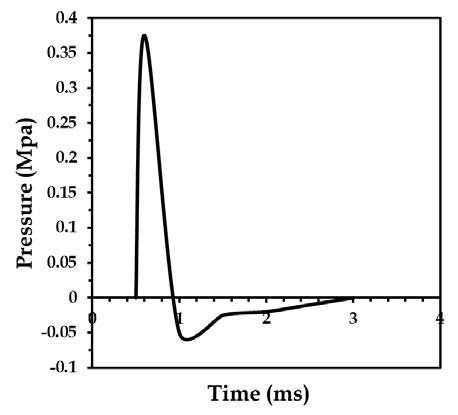
 DownLoad:
DownLoad: 